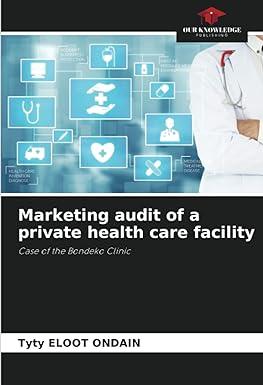Answered step by step
Verified Expert Solution
Question
1 Approved Answer
Select the correct answer To enter vendors and expenses transactions: From the navigation bar, select customers From the navigation bar, select expenses+new transaction From the
Select the correct answer
- To enter vendors and expenses transactions:
- From the navigation bar, select customers
- From the navigation bar, select expenses+new transaction
- From the gear icon, select vendors
- From the gear icon, select expense transactions
- To enter an expense transaction:
- From the navigation bar, select customers
- From the navigation bar, select sales
- From the create icon, select expense
- From the gear icon, select vendor transactions
- QuickBooks considers all of the following to be vendors except:
- Utility companies
- Suppliers of inventory and supplies
- Tax agencies such as the IRS
- Customers purchasing products
- Which of the following is not a vendor transaction?
- Order products
- Pay bills
- Make deposits
- Receive bills
- We can update the Vendors List at which of the following two points:
- Before entering transactions
- While entering transactions
- After entering transactions
- Which of the following two are venders and expenses transactions?
- Invoice
- Receive payment
- Pay bills
- Check
- The Bill Form is used to record which one of the following transactions?
- Owners Investment
- Services received but not yet paid
- Products sold to customers
- Cash purchases of supplies
- Which of the following activities, and the Quickbooks form used to record it, is incorrect?
- Receive products, customers list
- Order products, purchase order
- Record inventory information, products and services list
- Sell products and bill customers invoice
- Indicate the order in which the following onscreen vendors and expenses transaction forms typically should be prepared:
- Expense+Pay Bills
- Check+Pay Bills
- Bill+Pay Bills
- Invoice+Pay Bills
- Which of the following reports tracks past due bills and bills that are due shortly?
- Prodit & Loss
- Statement of Cash Flows
- Accounts Payable Aging
- Accounts Receivable Aging
- Accounts Payable are:
- Amounts totaling the net worth of a company
- Amounts paid to owners
- Amount that customers owe your business
- Amounts owed to others that are obligations
- When a purchase is recorded as a bill, Quickbook records a
- Debit to cash
- Credit to owners contribution
- Debit to accounts receivable
- Credit to accounts payable
Step by Step Solution
There are 3 Steps involved in it
Step: 1

Get Instant Access to Expert-Tailored Solutions
See step-by-step solutions with expert insights and AI powered tools for academic success
Step: 2

Step: 3

Ace Your Homework with AI
Get the answers you need in no time with our AI-driven, step-by-step assistance
Get Started


